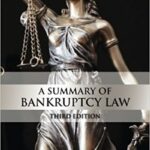
A homeowner should emerge from Chapter 13 knowing exactly what she owes on her mortgage; thus we have FRBP 3002.1 said Judge Hannah Blumenstiel.
At the end of my client’s Chapter 13, the lender’s response to the trustee’s notice of final cure payment failed to do that. The failure to adequately support its contentions in its pleading cost the bank.
Not as big a hit as I wanted. But a hit nonetheless.
Judge Blumenstiel yesterday socked Wells Fargo with my client’s attorneys fees in the debtor’s motion to deem the mortgage current. Even when the debtor was admittedly not post petition current.
I had sought the disallowance of all of the admitted post petition arrearages as a penalty for failure to adequately support the bank’s claim in its response to the trustee’s notice.
While a smaller victory than I hoped for, the ruling is another step in using Rule 3002.1 to get homeowners the transparency they deserve about their home loans.
This is California, so the loan balance my client was looking at approached a million dollars. That kind of exposure entitles one to transparency and competence on the part of the mortgage lender.
What we don’t know yet
Because of the facts of this case, including admitted arrearages and failure to modify the plan when loan modification failed, we didn’t get as full an exploration of the strength of Rule 3002.1 as we might have otherwise. Notable issues got glancing attention, worth further development next time.
Notices of mortgage payment change. During the course of this case, the debtor had not challenged the succession of notices of payment changes within the 180 days provided by the rule. Laid end to end, those notices showed that the lender never correctly reported the amount of the present payment in the course of announcing the new payment.
I argued that the repeated inconsistency cast doubt on the credibility of the lender’s calculations throughout. On the face of this decision, the argument got me nowhere. Once the period for challenging a notice past, the judge said, the numbers were beyond challenge.
Strategically, laying those inconsistent notices out in a single pleading had an educational impact on the judge. She said she’d spent three and a half hours preparing for this hearing and that she’d “learned something new” in the process. The rule is extremely powerful, she observed.
I suspect debtors will reap the benefit of her immersion in the insanity that is mortgage accounting in future cases.
Are two motions required under the Rule. Judge Blumenstiel threw the least satisfying part of my otherwise successful motion under Rule 3002.1 in the Howard case in my face.
In Howard, 563 B.R. 308, Judge Steven Johnson required the filing of two successive motions to get to an order disallowing the bank’s arrearage claim. One motion established that the bank was barred from introducing evidence in support of its claim of post petition delinquency. The second motion, where they had the burden to support their claim but couldn’t introduce evidence, was required to get the necessary order.
I think that my argument in this case that the second motion was superfluous got some traction here.
Be careful what you ask for. The prayer in this case asked that Wells Fargo be barred from introducing evidence in support of its arrearage claim; that the loan be deemed post petition current; and for an award of attorneys fees. I wanted the arrears disallowed as a penalty for sloppy, non responsive practice. It was an aggressive request.
Next time, I think I’ll ask also that the court determine what if anything, remains unpaid on the debtor’s home loan. Which is what my client needed out of this endeavor. She’s still behind and we needed to know how much.







